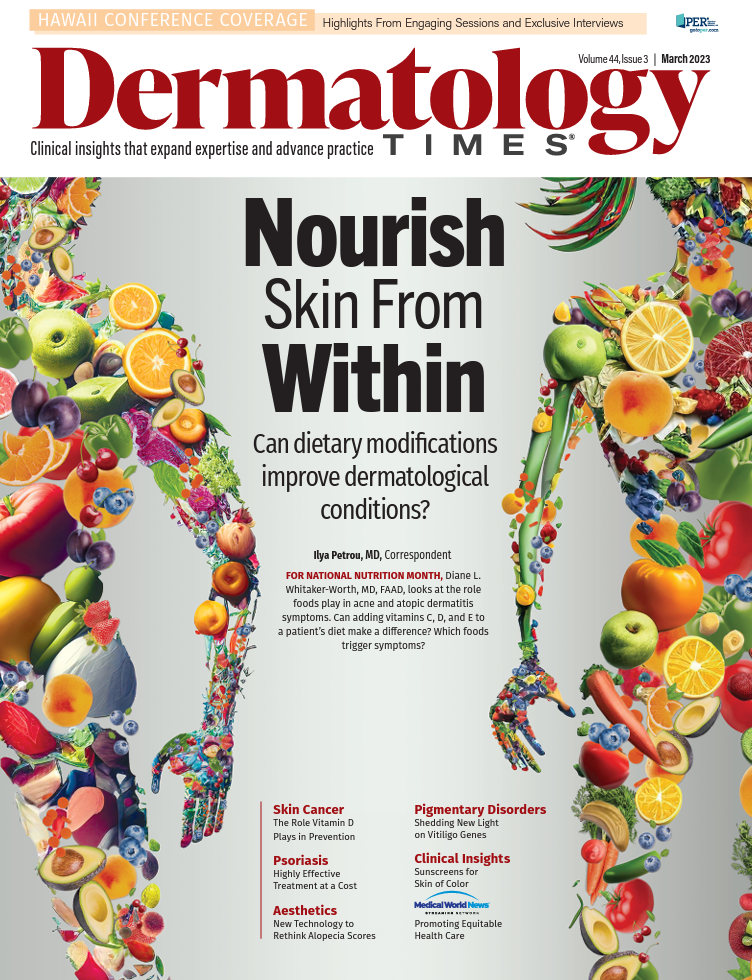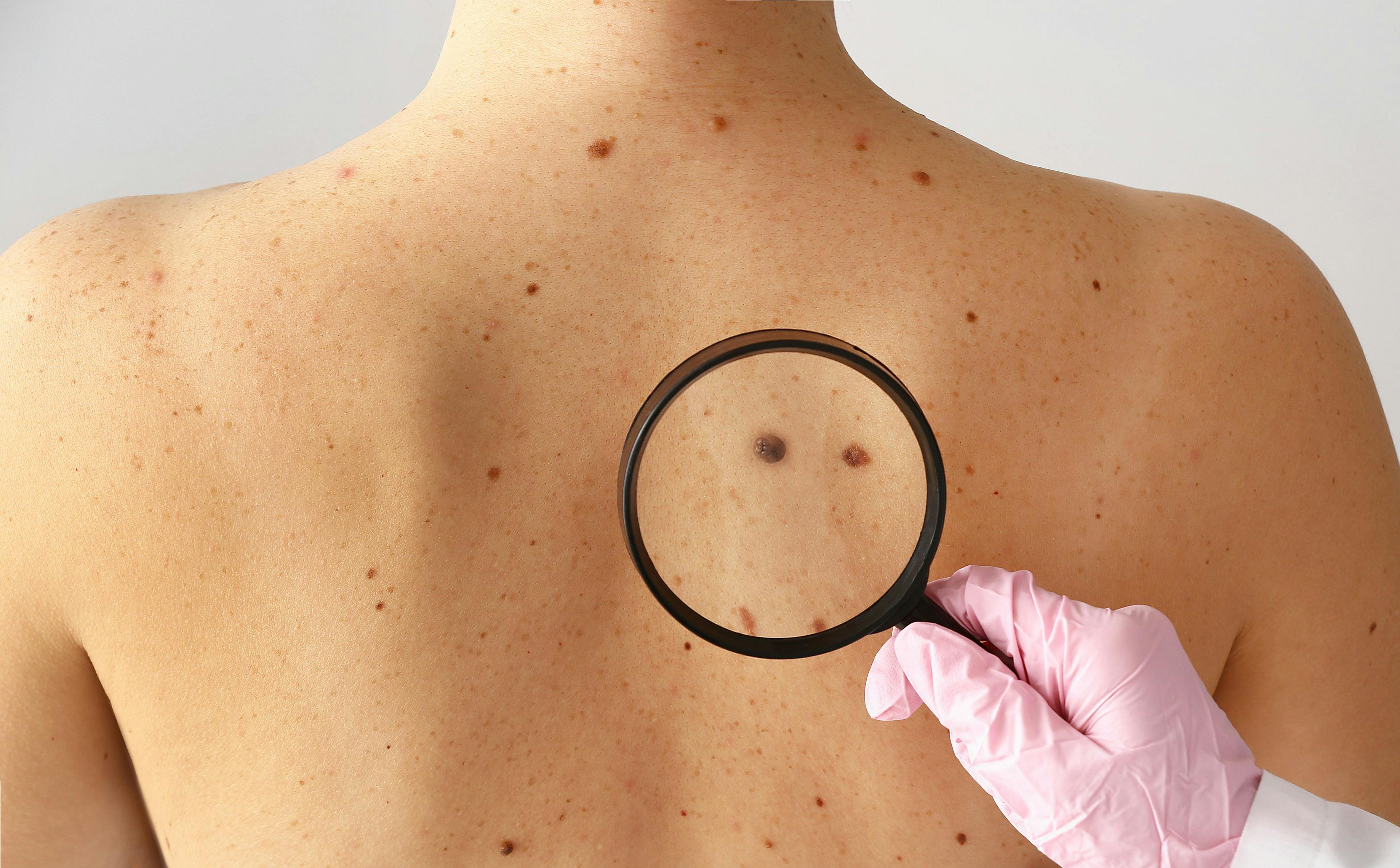- Acne
- Actinic Keratosis
- Aesthetics
- Alopecia
- Atopic Dermatitis
- Buy-and-Bill
- COVID-19
- Case-Based Roundtable
- Chronic Hand Eczema
- Drug Watch
- Eczema
- General Dermatology
- Hidradenitis Suppurativa
- Melasma
- NP and PA
- Pediatric Dermatology
- Pigmentary Disorders
- Practice Management
- Precision Medicine and Biologics
- Prurigo Nodularis
- Psoriasis
- Psoriatic Arthritis
- Rare Disease
- Rosacea
- Skin Cancer
- Vitiligo
- Wound Care
Publication
Article
Dermatology Times
Confidence Confirmed for Atopic Dermatitis Treatment
Author(s):
Treatment safety and efficacy for atopic dermatitis has seen significant growth over the last decade.
The treatment landscape for atopic dermatitis (AD) has expanded tremendously in the past decade, both in terms of efficacy and safety, according to Andrew F. Alexis, MD, MPH, and Benjamin N. Lockshin, MD, FAAD. During a recent Between the Lines video series, Alexis, vice chair for diversity and inclusion for the Department of Dermatology and a professor of clinical dermatology at Weill Cornell Medical College in New York, New York, teamed up with Lockshin, director of the Clinical Trials Center at US Dermatology Partners (formerly DermAssociates) in Silver Spring and Rockville, Maryland, to discuss the article, “Dupilumab Provides Acceptable Safety and Sustained Efficacy for Up to 4 Years in an Open-Label Study of Adults with Moderate-to-Severe Atopic Dermatitis.”1
Prostock-studio/AdobeStock

“I think many of us who deal with inflammatory conditions such as psoriasis and atopic dermatitis know that the impact of this disease process extends far past what we see visually,” Lockshin said. “It’s well established that atopic dermatitis’ impact in terms of quality of life encompasses anxiety, depression, and sleep disorders. In fact, the impact is comparable to what we see with psoriasis and many other inflammatory conditions. In addition, many of these individuals have effects that spill over into school or work. We see increased rates of absenteeism; we have decreased productivity.”
Biologics have changed the AD treatment spectrum. Both Alexis and Lockshin have vivid memories of past AD treatments that were limited in terms of reliability and benefit for patients. Alexis reflected on how challenging it was to support patients in the past. “Years ago, I would sit in my office and try to counsel my patients upset about the lack of treatment options,” he said.
Nearly 10 years ago, Lockshin was part of early dupilumab (Dupixent) studies, which were the beginning of modern treatment. Dupilumab was approved by the FDA for the treatment of AD in adult patients in 2017. In June 2022, it was approved to treat moderate to severe AD in patients aged 6 months to 5 years. Lockshin noted that additional treatment options are available; tralokinumab-ldrm (Adbry) also has FDA approval for treating AD, and lebrikizumab has had positive phase 3 data for the same indication.
Alexis added, “I focus on conveying that [AD] is a chronic disorder that is going to require long-term control; it is more of a marathon than a sprint. [I say] it in a way that’s a little bit more uplifting and positive than that because patients feel down when you use words like chronic.”
Based on the study results, Alexis and Lockshin are optimistic about dupilumab’s safety and efficacy. Nearly 3000 patients participated in phase 1, 2, and 3 trials, they said. Across all phases, only 114 patients withdrew from the study due to adverse effects. In addition, injection-site reactions were limited. The Investigator’s Global Assessment score decreased for 74% of participants by 2 or more points from parent study baselines after 52 weeks. The decline in study participants in the third and fourth years was due to dupilumab’s approval and commercial availability; ultimately the study was terminated by the sponsor.
The researchers measured efficacy via patient reports on the severity of itch on a scale of 1 to 10, with 1 reflecting no itch and 10 being the worst itch. Before dupilumab initiation, most participants reported a 7 or 8 in itch severity, which is consistent with findings in other AD clinical trials. After at least a year of dupilumab treatment every 1 to 2 weeks, the mean score hovered around 2. A score of less than 4 is considered mild.
“I tell patients, ‘If you make it a year and you’re doing really well, the likelihood that you’re going to continue to do well for years to come is very good,’” Lockshin explained. “I’m a very data-driven individual. When I can present this to a patient, saying that in an open-label manner over 4 years in patients who are on treatment just like you—using topicals, not using topicals—I see no real amplification of safety signals. In fact, many of the signals we saw in the phase 3 studies diminished over time.”
Efficacy is only one part of the equation, they noted, and long-term safety data are crucial when considering treatments for a chronic condition. Conjunctivitis was an adverse effect associated with early studies. Almost 25% of patients participating in this trial had a history of allergic conjunctivitis. If patients got conjunctivitis, it was within the first 24- to 52-week period; there was a decline in the rates of conjunctivitis as time went on.
Alexis and Lockshin noted that conjunctivitis does not influence their decision to prescribe dupilumab. Instead, they emphasized the importance of discussing the risk-to-benefit ratio of taking the drug with patients showing signs of conjunctivitis; oftentimes, the affected eye treatment can be managed without discontinuing dupilumab.
“Overall, this helps give some reassurance to me as a clinician that I can comfortably and safely treat patients with moderate-severe AD with dupilumab for the long term without new safety signals,” Alexis said. “On the efficacy side, I’m also reassured that we’re seeing efficacy not just in the short term, but in the long term. Rapid responses and early responses are important, but I want to make sure I’m controlling this patient longitudinally. These data give me confidence in being able to manage my patients over the long term.”
Both Alexis and Lockshin concluded the discussion by expressing confidence in utilizing dupilumab in their treatment landscape for AD, especially with the latest data from this 4-year open-label study.
“Regarding this article, I truly believe that when discussing with patients the risks and benefits from alternative agents, we need to go past the primary end points and the early safety data and think about things in the long haul,” Lockshin said. “This [study] addresses that. This is a nice marriage. It’s almost a union between real-world data and clinical trial data.”
Reference
- Beck LA, Deleuran M, Bissonnette R, et al. Dupilumab provides acceptable safety and sustained efficacy for up to 4 years in an open-label study of adults with moderate-to-severe atopic dermatitis. Am J Clin Dermatol. 2022;23(3):393-408. doi:10.1007/s40257-022-00685-0

Newsletter
Like what you’re reading? Subscribe to Dermatology Times for weekly updates on therapies, innovations, and real-world practice tips.






















